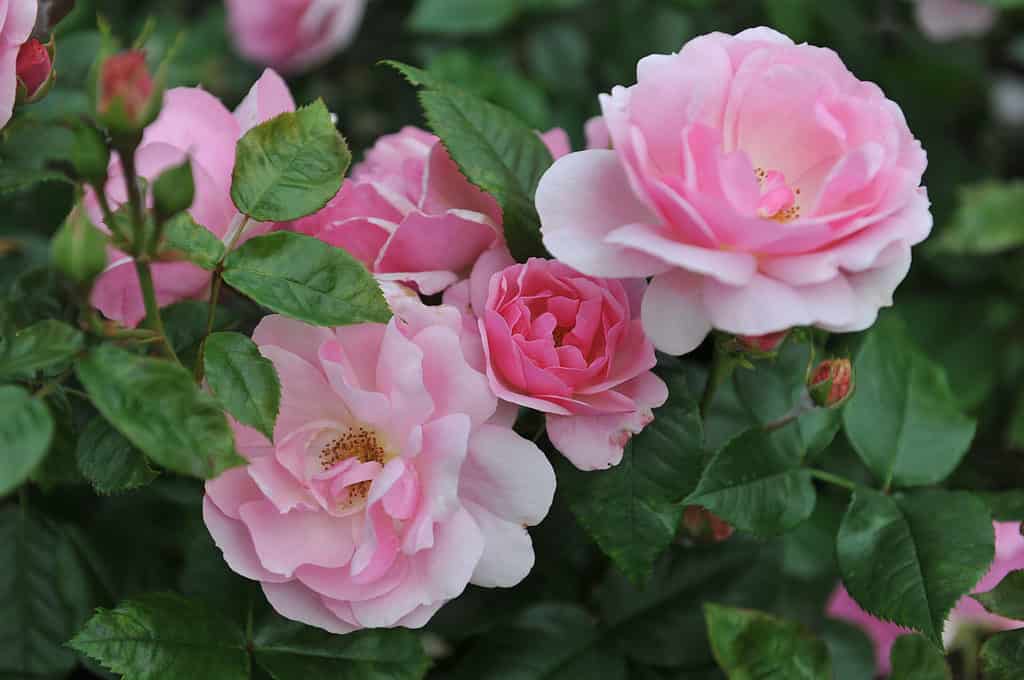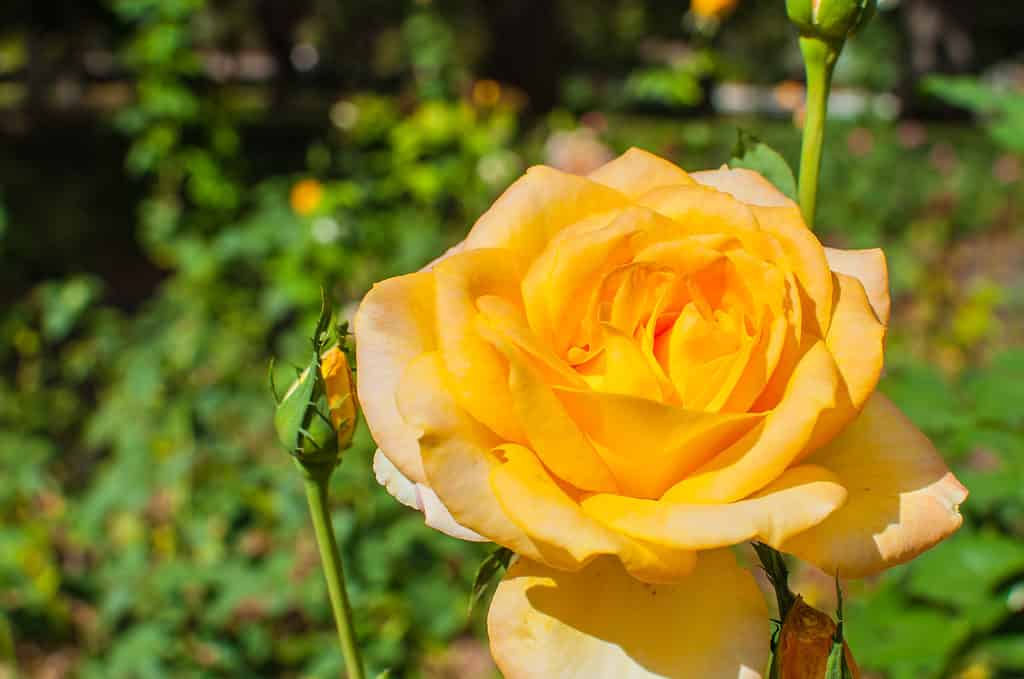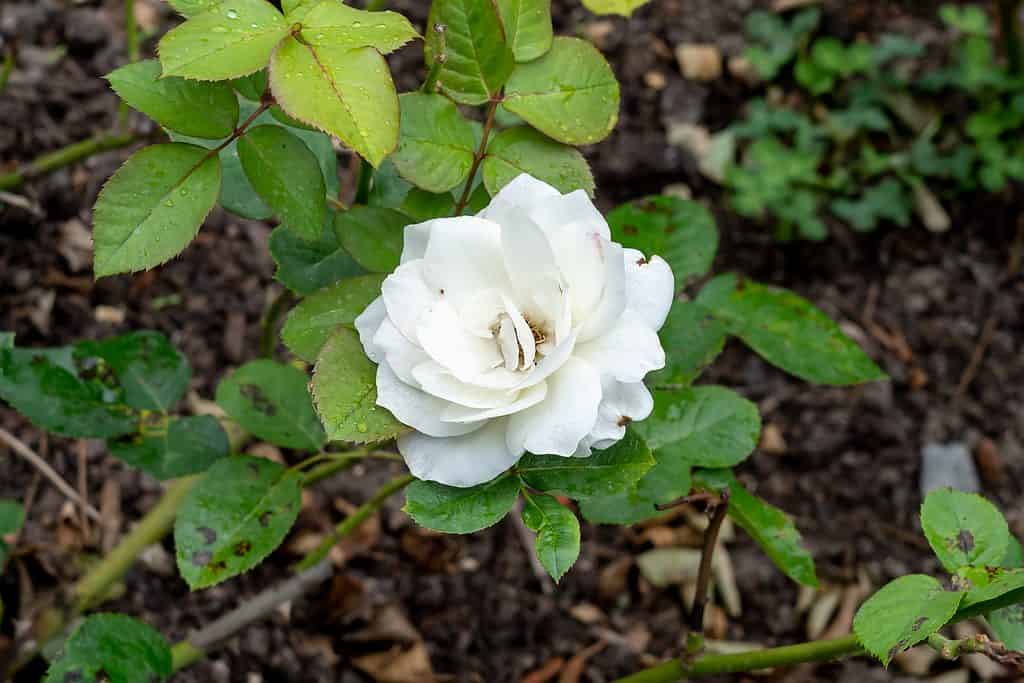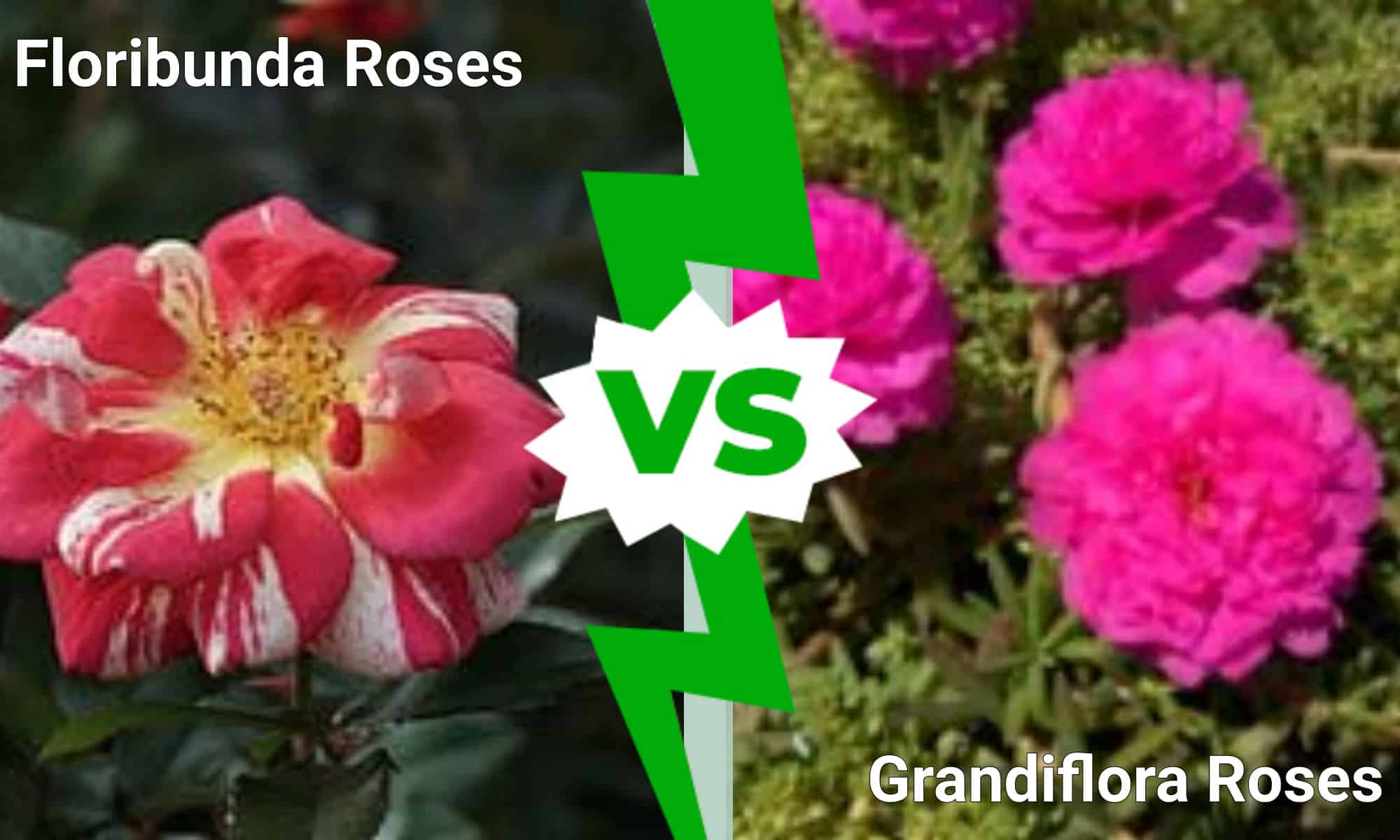Floribunda roses and grandiflora roses are two popular types of rose varieties that have distinct differences in their appearance. Floribunda roses are known for their clusters of small to medium-sized blooms, while grandiflora roses typically produce larger flowers on longer stems.
Floribunda roses often bloom more profusely than other types of rose bushes, producing an abundance of colorful flowers that can cover the entire plant. They tend to be shorter and bushier than grandiflora roses, making them ideal for planting in borders or containers.
Grandiflora roses, on the other hand, produce fewer blooms, but each flower is typically larger and more showy than floribundas. Their long stems make them perfect for cut arrangements or as a focal point in a garden bed.
In terms of color range, both floribunda and grandiflora roses come in a wide variety of hues, including reds, pinks, yellows, oranges, and whites. However, floribundas may have more variations within one cluster due to the smaller size of their individual buds.
Overall when it comes down to choosing between these two beautiful varieties, it really depends on personal preference whether you prefer quantity over quality with your blooms!
Comparing Floribunda Roses and Grandiflora Roses
Today we will discuss the differences and similarities between these two types of roses. We will go over plant height, stem length, flower size, and hardiness zone, among others. Let’s get started!
| Trait | Floribunda Rose | Grandiflora Rose |
|---|---|---|
| Height | 3 feet | 6 feet |
| Stem | Shorter, thicker stems | Longer, thinner stems |
| Flower Size | Flowers are smaller | Flowers are larger |
| Flower Quantity | More abundant flowers | Few flowers |
| Cold Hardiness | Hardy to USDA Zone 4-11 | Hardy to USDA Zone 6-10 |
| Pruning | Requires less pruning | Requires more pruning |
| Similarities | Similar colors. Requires 6+ hours of direct sunlight per day, susceptible to blackspot and powdery mildew. | Similar colors. Requires 6+ hours of direct sunlight per day, susceptible to blackspot and powdery mildew. |
Key Differences
The key differences between floribunda roses and grandiflora roses are their height and how the blooms grow. One is a compact bush. The other is taller. One of these roses has clusters of blooms, and the other has fewer but larger flowers.
Floribunda Roses vs. Grandiflora Roses: Bush Size

Floribunda roses and Grandiflora roses both come in the color pin.
©Sergey V Kalyakin/Shutterstock.com
When it comes to the size of rose bushes, there are notable differences between floribundas and grandifloras. Floribundas typically grow to a height of around three feet, making them ideal for smaller gardens or container planting. The shorter stems on these roses also make them easier to maintain and less likely to flop over under the weight of their blooms.
In contrast, grandiflora roses tend to be larger and taller than floribundas, often reaching heights of up to six feet. These roses have longer and thinner stems that can support their larger flowers but may require staking or additional support as they grow.
The bush size difference is partly due to how these two types of roses are bred. Grandifloras are hybridized from both floribunda and Hybrid Tea roses, resulting in taller plants with larger blooms. On the other hand, Floribunda roses are a cross between Hybrid Teas and Polyanthas, contributing to their shorter stature.
While both types of rose offer unique benefits for gardeners depending on their needs and preferences, understanding the differences in bush size can help when selecting which varieties will work best in your garden space.
Floribunda Roses vs. Grandiflora Roses: Flower Size

The Gold Medal Grandiflora Rose offers lovely yellow and orange blooms.
©Sarawut Konganantdech/Shutterstock.com
When it comes to comparing floribunda and grandiflora roses, one of the key differences lies in their flower size. Grandiflora roses are known for having larger blooms than floribundas. These large flowers can make a dramatic statement in any garden or bouquet.
In contrast, floribunda roses tend to have smaller blooms that are clustered together in groups. While they may not be as showy as grandifloras on their own, when grouped together, these small blooms can create a beautiful effect.
However, it’s important to note that the difference in size is not just about aesthetics – it also reflects different breeding goals. Floribundas are bred with quantity in mind, aiming to produce lots of smaller blooms per plant. This makes them ideal for mass planting or adding color throughout a garden.
On the other hand, grandiflora roses are bred for quality over quantity. They produce fewer but larger flowers per stem, which can be perfect for creating focal points or showcasing individual specimens.
Floribunda Roses vs. Grandiflora Roses: Flower Quantity

This floribunda rose is a tall, healthy bush that has glossy, dark green leaves.
©JHVEPhoto/Shutterstock.com
When it comes to the number of flowers produced by floribunda and grandiflora roses, there are some key differences to be aware of. While grandifloras may produce larger blooms that can be as big as a small dining plate, the overall number of blooms on a floribunda is typically higher. This means that while individual blossoms on a grandiflora may be more impressive in size, the sheer abundance of flowers on a floribunda can create an equally stunning effect.
Floribundas also tend to have smaller individual blooms than grandifloras, although they do come in both single and semi-double varieties. In general, though, most floribundas will have single blooms, which can either be cup-shaped or flat with a lower profile. Grandifloras, on the other hand, usually produce double blooms that are flatter than those found on floribundas.
Floribunda Roses vs. Grandiflora Roses: Petal Count
When it comes to differentiating between floribunda and grandiflora roses, one noticeable difference lies in the number of petals each type possesses. Floribundas generally have a higher petal count than grandifloras, with an average range of 5-12 petals per flower. In contrast, grandifloras typically only have around 5-6 petals per flower.
This variation in petal count can affect the overall appearance, and visual impact of each rose variety. For example, floribundas, with their fuller blooms, may be preferred for creating lush floral arrangements or adding a pop of color to garden beds. Grandifloras are often favored for their elegant simplicity and understated beauty.
Floribunda Roses vs. Grandiflora Roses: Cold Hardiness

Cover your roses with frost cloth, sheets, or blankets during frosty nights.
©Tasha-photo/Shutterstock.com
When it comes to choosing between floribunda roses and grandiflora roses, one factor to consider is their cold hardiness. Floribundas are known for being quite hardy and can typically thrive in a wide range of climates, from USDA zones 4-11. This makes them a great choice for gardeners who live in areas with harsh winters or extreme temperature fluctuations throughout the year.
On the other hand, grandifloras are not quite as hardy as floribundas and tend to do best in slightly warmer climates that fall within USDA zones 6-10. While they can still survive colder temperatures if properly cared for, they may struggle more than floribundas when faced with harsh winter conditions.
Overall, if you live in an area with particularly cold winters or unpredictable weather patterns, opting for a floribunda rose may be your best bet. These hardy plants have proven time and again that they can withstand even the toughest of conditions while continuing to bloom beautifully all season long.
Floribunda Roses vs. Grandiflora Roses: Pruning

Grandiflora roses typically require more pruning than floribundas.
©PhotoJuli86/Shutterstock.com
When it comes to pruning, there are some key differences between floribunda and grandiflora roses. Floribundas tend to require very little pruning, which can make them a great choice for gardeners who want a low-maintenance rose variety. In fact, many floribunda varieties can be left to grow largely unchecked without sacrificing their overall health or beauty.
On the other hand, grandifloras require more regular pruning in order to produce the best possible blooms. This is because grandifloras typically produce larger flowers that are designed to showcase their unique color and texture patterns as much as possible. By removing excess growth and focusing on creating strong stems and branches, gardeners can help ensure that their grandiflora roses produce the biggest and most impressive blooms possible.
Similarities

Roses require six or more hours of direct sunlight per day.
©Roman Khomlyak/Shutterstock.com
Although grandiflora roses and floribunda roses are distinct from one another in many ways, there are a few similarities that they share. One notable similarity is the range of colors both types of roses come in. Whether you prefer red, pink, yellow, white, or purple blooms, both varieties can cater to your color preferences.
In terms of care requirements, both grandiflora and floribunda roses require at least six hours of direct sunlight per day to thrive. Additionally, watering is an essential aspect of maintaining healthy plants. These rose species need at least one inch of water every week.
Unfortunately, despite their beauty and popularity among gardeners worldwide, these roses are still susceptible to common diseases like blackspot and powdery mildew. This means that regular monitoring and treatment may be necessary to keep them free from infection.
Thank you for reading! Have some feedback for us? Contact the AZ Animals editorial team.








